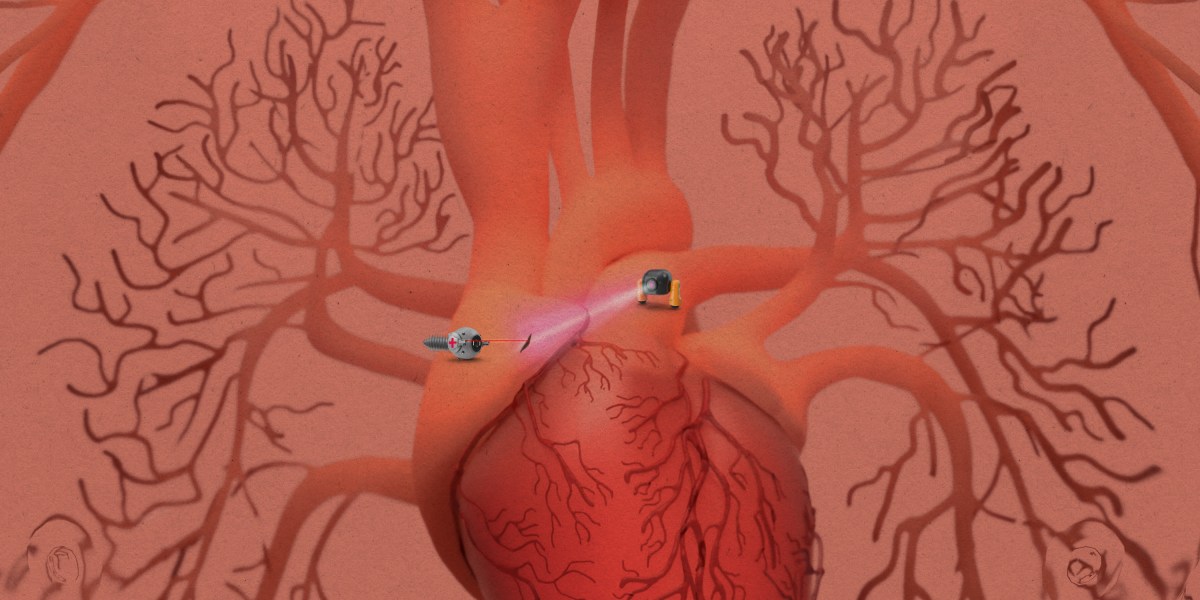Medical microrobots that can travel inside your body are (still) on their way

Okay, I know what you’re probably thinking. We’ve been hearing about the use of tiny robots in medicine for years, maybe even decades. And they’re still not here. Where are my medical microbots already?
They’re coming, says Brad Nelson, who works in robotics at ETH Zürich. Soon. And they could be a game changer for a number of serious diseases. In a perspective published in Science today, Nelson and his coauthor Salvador Pané argue that these tiny machines could help deliver drugs exactly where they are needed. That would help minimize toxicity. “So we can use stronger doses and maybe we can rethink the way we treat some of these diseases,” Nelson says.
What makes Nelson optimistic that these technologies are on their way? Some such robots have made their way off the lab bench and into large animals, including pigs. There are at least four startups working on medical microrobots that could travel “untethered” inside the body. One of these, Bionaut, raised $43 million earlier this year to take its therapy into phase 1 trials. It will use the money to develop devices about the size of a pencil tip that are designed to deliver drugs to the site of glioma brain tumors and pierce cysts that block the flow of spinal fluid in the brain, a symptom of a rare childhood disorder called Dandy-Walker syndrome.
“Microrobot” is a catch-all term covering robots that range in size from one micron (about 100th of the width of a human hair) up to a few millimeters in scale. If the robot is really tiny, smaller than a micron, it’s a nanorobot. And while it may be enticing to say “microbot” because it sounds really cool, that’s “more of a Hollywood kind of term,” Nelson says.
Microrobots can be composed of synthetic materials, biological materials (these are called biological robots or biobots), or both (biohybrid robots). Many of them, including the ones that Nelson is developing, move thanks to magnets.
But others can move on their own. Last week a team of researchers from Tufts and Harvard reported that they had turned tracheal cells into biobots. The human trachea has waving cilia on the inside to catch microbes and debris. But these researchers encouraged the tracheal cells to form an organoid with the cilia on the outside. Depending on their shape and cilia coverage, the bots could travel in straight lines, turn circles, or wiggle. And—surprise twist—when the researchers scraped a metal rod across a layer of living neurons growing in a dish, the biobots swarmed the area and triggered new neurons to grow. “It is fascinating and completely unexpected that normal patient tracheal cells, without modifying their DNA, can move on their own and encourage neuron growth across a region of damage,” said Michael Levin, an engineer at Tufts who led the work, in a press release. “We’re now looking at how the healing mechanism works, and asking what else these constructs can do.”
The potential usefulness of these microrobots is vast. “A lot of people are thinking about vascular diseases,” Nelson says. Microrobots could be injected and dissolve blood clots in the brain to treat stroke patients. Or they could shore up weak spots in vessels in the brain to prevent them from bursting. They could deliver drugs to specific locations. And then there are weirder applications. Researchers at the University of Pennsylvania have developed bots that they hope might one day replace your toothbrush.
Other teams are working on bots that mimic—or are made from—sperm. Researchers have developed cow sperm covered in iron nanoparticles, called IRONSperm, that swim with the help of a rotating magnetic field; the hope is that they can be used for targeted drug delivery. One team from Germany is working on microrobots that help with fertilization by delivering weakly swimming sperm to the egg. Their system even releases drugs to break down the egg’s hard coating. That same group also recently described how microrobots might be used in IVF. In a typical IVF procedure, an egg is fertilized outside the body, and the resulting embryo is transferred to the uterus. The procedure often fails. But if microbots could shuttle the embryo back to the fallopian tube or endometrium, the embryo could develop under more natural conditions, which might improve implantation rates. They envision microrobots guided by magnetic fields that could grip or carry an embryo, release it, and then degrade naturally.



